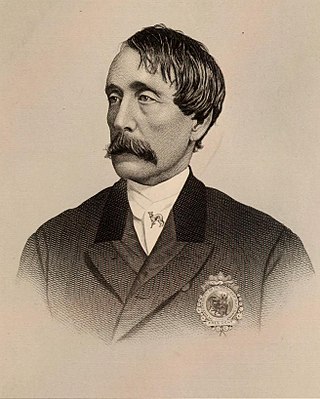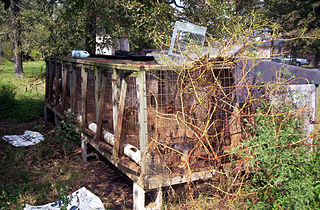
Henry Bergh founded the American Society for the Prevention of Cruelty to Animals (ASPCA) in April, 1866, three days after the first effective legislation against animal cruelty in the United States was passed into law by the New York State Legislature. One of the tasks he undertook was to pass a law that would prohibit the use of dogs for the monotonous and hot task of turning grills in restaurants. He made it. Later, when Bergh went to visit restaurants to monitor law enforcement, he discovered that numerous restaurants had replaced dogs with black children. Therefore, Bergh also prompted the formation, in 1874, of the New York Society for the Prevention of Cruelty to Children (MSPCC).
The American Society for the Prevention of Cruelty to Animals (ASPCA) is a non-profit organization dedicated to preventing animal cruelty. Based in New York City since its inception in 1866, the organization's mission is "to provide effective means for the prevention of cruelty to animals throughout the United States."

A puppy mill, also known as a puppy farm, is a commercial dog breeding facility characterized by quick breeding and poor conditions. Although no standardized legal definition for "puppy mill" exists, a definition was established in Avenson v. Zegart in 1984 as "a dog breeding operation in which the health of the mill’s dogs is disregarded to maintain a low overhead and maximize profits". They are cited as being a result of increased demand for household pets, especially after World War II. The Veterinary Medical Association of the Humane Society of the United States defines the main characteristics of a puppy mill as "emphasis on quantity over quality, indiscriminate breeding, continuous confinement, lack of human contact and environmental enrichment, poor husbandry, and minimal to no veterinary care."

A humane society is a group that aims to stop cruelty to animals. In many countries, the term is used mostly for societies for the prevention of cruelty to animals (SPCA). In the United Kingdom, and historically in the United States, such societies provide waterway rescue, prevention and recovery services, or may give awards for saving human life.

An animal control service or animal control agency is an entity charged with responding to requests for help with animals, including wild animals, dangerous animals, and animals in distress. An individual who works for such an entity was once known as a dog catcher, but is generally now called an animal control officer, and may be an employee or a contractor – commonly employed by a municipality, county, shire, or other subnational government area.

Cruelty to animals, also called animal abuse, animal neglect or animal cruelty, is the infliction by omission (neglect) or by commission by humans of suffering or harm upon non-human animals. More narrowly, it can be the causing of harm or suffering for specific achievements, such as killing animals for entertainment; cruelty to animals sometimes encompasses inflicting harm or suffering as an end in itself, referred to as zoosadism.

Animal Precinct is an American documentary reality television series that originally aired from June 26, 2001, to February 4, 2008, on Animal Planet. Set in New York City, the series follows the animal cruelty agents of the ASPCA's Humane Law Enforcement Division as they work as advocates for the five million pets and other animals in New York City, sometimes removing them from dangerous situations and pursuing arrests of those who have been accused of being cruel to animals.

The New York Society for the Prevention of Cruelty to Children was founded in 1874. It is the world's first child protective agency. It is sometimes called the Gerry Society after one of its co-founders, Elbridge Thomas Gerry. It is commonly seen as having played a key role in the development of children's rights and child protective services in the English-speaking world. Today it offers support and advocacy for high-risk and abused children, parental skills classes, and professional training in the identification and reporting of child abuse and neglect.
There are forty-five local police agencies in Westchester County, New York. As well as other agencies. They are responsible for protecting Westchester County, these agencies frequently work with one another in the surrounding counties. Current economic times has caused a few Westchester municipalities to consider consolidation of police services. The Westchester County Department of Public Safety started providing primary police services for the Town/Village of Mount Kisco in 2015.
Animals used by laboratories for testing purposes are largely supplied by dealers who specialize in selling them to universities, medical and veterinary schools, and companies that provide contract animal-testing services. It is comparatively rare that animals are procured from sources other than specialized dealers, as this poses the threat of introducing disease into a colony and confounding any data collected. However, suppliers of laboratory animals may include breeders who supply purpose-bred animals, businesses that trade in wild animals, and dealers who supply animals sourced from pounds, auctions, and newspaper ads. Animal shelters may also supply the laboratories directly. Some animal dealers, termed Class B dealers, have been reported to engage in kidnapping pets from residences or illegally trapping strays, a practice dubbed as bunching.
Tina Salaks, a resident of New York City, is a former special agent with the American Society for the Prevention of Cruelty to Animals (ASPCA) Humane Law Enforcement Division appearing in the "Animal Precinct" series on Animal Planet.
Law enforcement in New York City is carried out by numerous Federal, State, City and Private agencies. New York City has the highest concentration of Law Enforcement in the United States.

The welfare of animals in rodeo has been a topic of discussion for the industry, the public, and the law for decades.
Law enforcement in New York State is primarily conducted by Police Officers employed by State, City, County Police departments. A number of State, City, Educational, and private companies employ Peace Officers.

The New Jersey Society for the Prevention of Cruelty to Animals is a law enforcement agency in the state of New Jersey that focuses on humane law enforcement. The agency enforces animal-related laws and investigates cases of animal cruelty. In January 2018, Governor Chris Christie signed a bill intended to dissolve the organization and transfer animal cruelty law enforcement to county prosecutors, municipalities, and county SPCA agencies. The NJSPCA will cease law enforcement operations by August 1, 2018. The agency was disbanded in 2018 after a State Commission of Investigation Reports (SCI) showed that the agency could not account for over 700K in Attorney fees, mismanaged bank accounts, and businesses created by its board members. The agency was virtually bankrupt at the time it was disbanded due to a lack of oversight. The NJSPCA was sued in 2015 under the Open Public Record Act in which it spent 140K on Attorney's fee's. It was order on 4 separate occasions that they were a Government Agency and subject to OPRA. See Sci Report https://www.nj.gov/sci/pdf/SPCA-FollowUpReport.pdf
Humane law enforcement is the enforcement of laws relating to the humane treatment of non-human animals.

The Detective Bureau is one of 20 bureaus that constitute the New York City Police Department and is headed by the three-star Chief of Detectives. The Detective Squad was formed in 1857 with the Detective Bureau later formed in 1882.
Ag-gag laws are anti-whistleblower laws that apply within the agriculture industry. Popularized by Mark Bittman in an April 2011 The New York Times column, the term ag-gag typically refers to state laws in the United States of America that forbid undercover filming or photography of activity on farms without the consent of their owner—particularly targeting whistleblowers of animal rights abuses at these facilities. Although these laws originated in the United States, they have also begun to appear elsewhere, such as in Australia and Canada.










